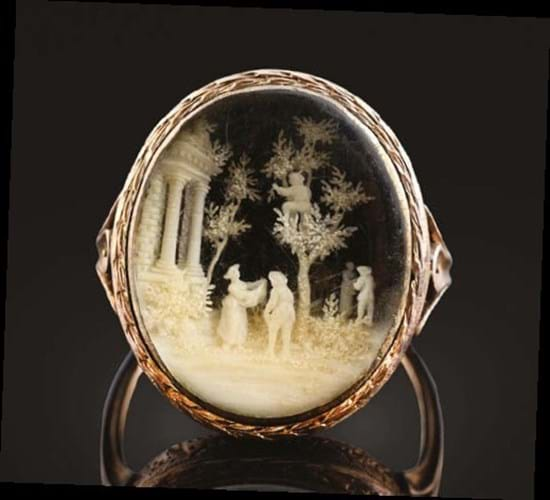All about value
January
MADAM – I fear the whole government consultation into ivory will be dominated by the mechanics of certificates to sell, and whether these will cost £30 or £120 and last three months or three years.
If you are a BADA dealer or an international auction house, you can come to terms with such a settlement. But the vast majority of worked ivory, or rosewood veneer, is attached to items with a value of £100 down to a fiver, passing through hands who cannot tell whether it is ivory or bone, rosewood or mahogany.
We need a de minimis rule to exclude such items from restrictions on sale, based on the value of the item and the weight or volume of suspected offending material involved.
Simon Shouler
Shouler & Son
Melton Mowbray and Grantham
“I fear the whole consultation into ivory will be dominated by the mechanics of certificates to sell
Ivory battle lines being draw
February
MADAM – As a specialist in items associated with Napoleon for many years, I noted with interest your report on the gold and ivory ring the young Napoleon gave to Caroline du Colombier (ATG No 2278).
The ring has remained in the family of its recipient since then. Now it is coming to auction for the first time – and the last, if a blanket ban on the sale of ivory is taken up by countries in the EU.
This piece of French history may soon be unsaleable in France and if it were taken to the US, it would no doubt be seized by customs officers who would smash the ivory elements and hand back just the gold to the owner.

The gold and ivory ring given by the young Napoleon to Caroline du Colombier.
This work of art on its own demonstrates the danger that a total ban would put on irreplaceable historical items. We are standing on the edge of a precipice, gazing into the abyss of an iconoclasm that will be just as disastrous as anything wrought by Savonarola.
We need to step back before there is a bonfire of the ivories. If we do not temper our desire to save the elephant from the vile trade in modern ivory with common sense, I fear that posterity will judge us just as harshly as we have judged iconoclasts in the past, yet not learned the lessons from the mistakes they made.
Graham Bowers
Newport, Isle of Wight
Full fees clarity is vital
April
MADAM – In case there is any doubt about the need for more clarity in auctioneer fees, the following figures illustrate the confusing situation faced by the seller.
I recently sold a clock at an established provincial auctioneer. On enquiring at their office, I was told that the seller’s fee was 15% plus VAT. No further information was volunteered.
The clock sold for a hammer price of £1400, on which the buyer paid a premium of 21% plus VAT, giving a total purchase price of £1752.80. My deductions, based on the hammer price, were £252 commission, £25.20 warranty and £12 for a photograph, which meant that I received £1110.80.
This represents 63.4% of the purchase price, so in effect I paid 36.6% commission including VAT.
Why can’t we dispense with the term ‘buyer’s premium’ and show it for what it is, namely another deduction from the money due to the seller?
Raymond Woodruffe
Tunbridge Wells
Ads probe: the collector effect
February
MADAM – I write as a collector about the Advertising Standards Authority and auction estimates [following the ASA ruling that premiums should appear alongside the estimate in catalogues].
Am I incensed at the capitulation of the auction trade?
On the majority of lots, the auction estimate has been treated as guidance of an anticipated bid, the hammer price, in the absence of special interest.
What now? With all costs included in the ‘estimate’, am I to remember to bid only 80% of that figure to accommodate costs? Will that be readily apparent to collector bidders – those that the ASA is seeking to protect?
Probably not. In which case, the new ‘estimate’ may well have a tendency to increase bids.
So, administration apart, it is in the interest of auctioneers to roll over and accept ASA best practice guidelines.
To answer my own question, yes, I am incensed.
Ian Harvey
London
When the hammer falls, I reckon that’s the final say
May
MADAM – Milton Silverman in A lawyer writes (ATG No 2291) sets out useful guidance on the legal status of when the hammer falls.
I am an old-fashioned ex-livestock auctioneer who eyeballs his purchasers. When the hammer falls, that is a contract in my view (and those of my age) and an auctioneer should not change their mind, unless they have made a mistake that was clearly visible.
Upholding this principle once cost me dear. I took a bid from someone who could not pay (I didn’t know it at the time) and missed a good client friend who had all the money in the world.
Barry L Hawkins,
Barry L Hawkins Auctioneers
Downham Market, Norfolk
Trade bodies should merge
February
MADAM – May I, through the medium of your Letters page, pose a question to the members of both BADA and LAPADA please?
Because I exhibit at both of their fairs, I am obliged to be a member of the two organisations. Thus I pay quite substantial annual subscriptions to two organisations that, on the face of it, do very similar things, namely they both organise an annual fine art and antiques fair.
The duplication of costs for running a fair for one week a year must be considerable.
So, I ask, would it not make sense for these two very similar trade associations to merge? The logic of such a move seems to me to be compelling.
Very many dealers who exhibit at LAPADA also do so at BADA. It should not be too difficult for a single organisation to run two fairs a year, which Clarion Events does at Olympia.
A merged organisation would be much more effective when representing the interests of the antiques trade to the government.
There would be substantial efficiencies if both bodies came together.
It would be interesting to hear the views of other BADA and LAPADA members.
Jeremy Taylor
The Taylor Gallery, London
“Would it not make sense for these two very similar trade associations to merge? The logic seems to me to be compelling
God Bless America (and the US)
May
MADAM – Without wishing to appear nit-picking (really, I don’t) the article in your militaria special that references the Lloyd’s Patriotic Fund Sword (ATG No 2290) describes Captain Rutherford as US-born, in 1764.

The £100 Lloyd’s Patriotic Fund sword to Capt Rutherford, sold for $235,000 (£173,000) hammer at James D Julia on April 11.
My US-born wife points out that since it was not until 1776 – or, strictly speaking 1781, the end of the Revolutionary War – that the United States (as we now know it) came into being, he should more correctly be referred to as ‘American-born’.
To paraphrase the Duke of Plaza-Toro in Gilbert & Sullivan’s The Gondoliers: “It’s only a small matter; still, one may as well get it right.”
Wilfrid de Freitas
Bookseller Montreal, Canada













